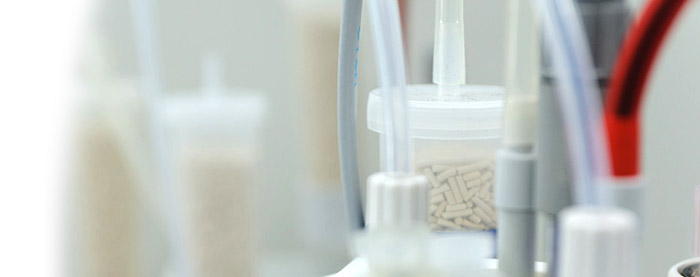What Are Generics?
Because generics act in the same way in the human body, they are interchangeable with the reference products. They have the same dosage form and have demonstrated the same or even better bioequivalence in controlled studies. The production of generic medicines is regulated and controlled by the same government bodies which are responsible for the prototype pharmaceuticals.
Generics usually enter the markets after the expiry of their reference products’ data protection periods. The only difference is that generics do not incur the same initial costs, which allows the generic manufacturers to offer a much lower price for patients.
What are generics’ advantages?
Generics offer the same efficacy as their reference products. The difference is that they are sold at a significant discount. Lower prices make pharmaceuticals affordable to people who might otherwise not have any access to treatment. Generics also help relieve the financial pressure on the health insurance funds and public systems.
Why have generics become such a hot topic recently?
With an aging population and accelerated technological progress, the demand for pharmaceuticals is increasing. Along with this process, the healthcare costs continue to rise every year. Governments and health authorities across the world are aware of the importance of promoting generics and thus are widely accepted in the setting of a severe economic and financial crisis.
Why are generics so important for the public and global health?
Pharmaceuticals usually represent between 8% and 15% of total healthcare expenditure. Generics manage to increase the access to drug therapy by keeping costs down. Many more people are treated at a more or less preserved total cost. Often, they help save lives too. Furthermore, financial savings can free up resources for new innovative medicines – which will in turn become the generics of the future.
Why do generics cost less?
The main reason for the lower prices of generics is that the initial basic and clinical research programs do not need to be repeated in full once they are completed for the reference product. Besides, the profits of the generic drug manufacturers are much less than those of the pharmaceutical giants. These cost savings are passed on to the patient.
How much is “less”?
“Less” means a significantly lower price. Generics can cost between 20% and 90% less than the reference products. Furthermore, the competition coming from generics and the price pressure exercised by public funds impose on reference product manufacturers to reduce their own prices after or sometimes even before the patent has expired.
Are generics really as good as the reference product?
Yes, they are. Generic medicines contain the same active ingredients and act in the same way in the human body. They may contain different non-active ingredients or may differ in size, shape or color, but these differences have no impact on their therapeutic effect, they can even make the administration more pleasant for the patient. The only significant difference from the reference products is the price. This has been proven in bioequivalence studies and approved by the relevant regulatory bodies.
Are generics the same as the reference product?
Generics contain the same active ingredients in the same concentration, as well as the same dosage form as the reference product. Their efficacy is verified by strict bioequivalence studies, approved by international regulatory bodies. They may vary in their method of preparation or in the composition of inactive ingredients such as colorings or binders, which have no therapeutic effects. The only significant difference is the price.
Why can’t we just copy the original molecules?
The big pharmaceutical companies, which hold the patents for many of the molecules we are currently manufacturing, are not eager to share their know-how and manufacturing details. This remains so even after the patent expires.
So, how does Tchaikapharma approach the development of its own version of the product?
There are three milestones:
- Navigating through a complex legal framework of intellectual property rights
- Strictly following regulatory requirements
- Timing
Even if we have the right recipe, know the quantitative ingredients and can determine the technology, there is often a lot about the reference product that we still don’t know.
We develop our own practices, using modern equipment and ingredients in order to prove the efficacy, safety and reproducible quality of our generic product. Usually just know-how is not enough – time matters as well.
First-to-market
The aim of every generic manufacturer is to be the first to penetrate the market after a patent expires. This requires planning, investments and effective management of the manufacturing process.
Our main goal is to deliver the necessary medicines to our patients as quickly as possible.


